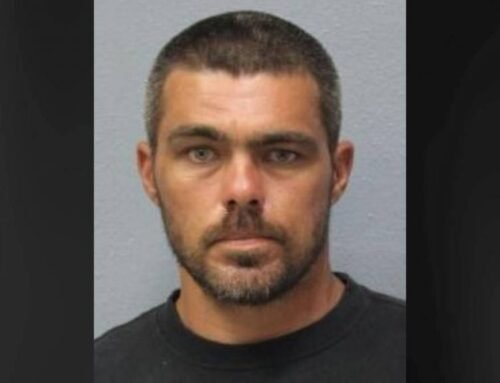Gov. Josh Green on Thursday announced a tentative decision to reopen West Maui to tourism on Oct. 8 in an urgent effort to boost the island’s economy afloat after a deadly fire left part of the area a disaster zone.
At a meeting of the state Council on Revenues, Green also outlined a plan to direct $100 million in federal funds that are usually distributed as Temporary Assistance to Needy Families to residents directly affected by the deadliest U.S. disaster in more than a century.
Those payments will amount to $1,200 each for people who are at least 18 years old, he said.
The state Department of Business, Economic Development and Tourism this week released an updated economic forecast that projects a sharp drop in Hawaii’s economic growth over the next two years with a loss of nearly $2 billion, mainly due to the fires and other impacts from them.

Green explained his plan to reopen West Maui to tourists just two months after the fire destroyed the historic town of Lahaina and left at least 115 people dead as a necessary step.
“We expect the ripple effect from this disaster to be very significant if we don’t do that,” he said.
Hundreds of businesses in Lahaina were destroyed, but even those elsewhere on the Valley Isle have suffered as the number of tourists plummeted.
Lahaina Excluded
In a nod to calls to keep the area closed out of respect for the victims, Green promised to make “it very clear that while people are in mourning, we’re also going to try to support families and businesses and everyone in their survival so they don’t only lose their home, or God forbid a loved one, but they also are able to survive economically.”
He also explained that “there of course will be no traffic to Lahaina, Lahaina is lost, but to the other parts of the region like Kaanapali and Kapalua, those parts of our state are going to be available for people to travel to again.” Both of those are major resort areas.
Green said he plans to formally announce his decision to reopen in a public address scheduled for noon Friday. The speech will be livestreamed on Green’s Facebook page, as well as via Olelo Community Media.
“I’ll message that so that people understand as we head into the last three months of the year that people should, if they want to support Maui and support Hawaii, they can come here,” he told the council.
The wildfire destroyed more than 2,200 structures, including about 1,500 homes. The disaster area also had more than 800 business establishments with about 7,000 employees.
Earlier this week Green announced a separate $25 million fund of state, county and private funds that will be distributed to support to Lahaina businesses with payments of about $10,000 to $20,000 each.
Worries About A Ripple Effect
The statewide economic impact from the fire will likely be significant.
The state Department of Business, Economic Development and Tourism forecast overall state economic growth of 1.1% for this year, down from DBEDT’s previous estimate of 1.8%. DBEDT also revised its economic growth projection for 2024 downward, from 2% percent to 1.5%.
That works out to a loss of more than $600 million in economic activity this year, and about double that amount next year.
DBEDT estimated the business revenue of the ruined Lahaina business establishments at $2.7 million per day, and reported some 88 transatlantic flights were canceled during August. That amounts to more than 23,000 seats.
Passenger counts at Kahului airport plummeted by 70%, and the economic loss from business closures and decreased visitor expenditures is estimated to be $11 million a day on Maui since the disaster.

Maui unemployment claims surged from an average of 130 per week before the fire to 865 cases in the first week after the fire, to 4,449 cases in the second week, followed by 2,705 cases the third week after the fire.
The DBEDT report also says Hawaii continues to cope with a labor shortage as the state lost population for several years in a row, and “it is reasonable to expect more people to move out of state due to business employment consolidation and relocation.”
Council On Revenues
The Council on Revenues, which is tasked with estimating how much the state general treasury will collect in taxes each year, on Thursday reduced its tax collection projection for this fiscal year by about $270 million, in part because of impacts from the fire.
The Council on Revenues had projected earlier this year that state tax collections would grow by 4% in the fiscal year that began July 1, but on Thursday scaled that estimate back to growth of 1.3%. Those lost tax collections will make a dent in overall state revenue for this year, which is expected to total nearly $11 billion.
The council also increased its projection for the fiscal year that begins next July 1 from 3.5% to 5.2%, a sign the economists expect to see better times ahead.
“I do know that people are very worried and are hurting right now on both levels, first at the extreme trauma that’s occurred, and second, at what comes next,” Green told the council. “There will be billions of dollars in relief — there’s no doubt about that.”
“But I do know that we’re in for a lot of building, lot of reconstruction, and lot of cleaning up, and then significant settlements that will necessarily include, I believe, all parties,” Green said.
The governor also announced Thursday the Federal Emergency Management Agency has agreed to continue payments for another 15 days to Maui hotels that are providing shelter to about 5,700 people who were displaced by the Aug. 8 fire.
That FEMA support will be extended until Sept. 29 while state and county officials scramble to move the displaced Lahaina residents into short- and long-term rentals, Green said.
Civil Beat’s coverage of Maui County is supported in part by a grant from the Nuestro Futuro Foundation.







Leave A Comment